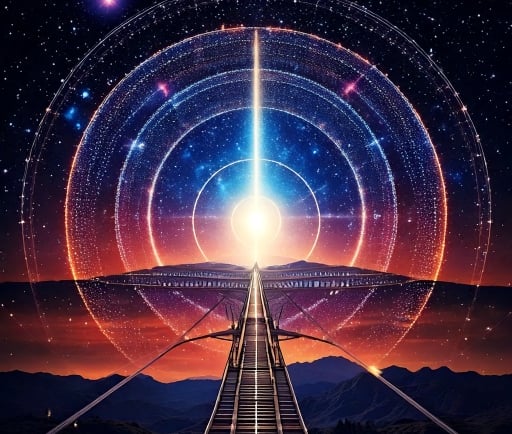Exploring the Quantum Star Bridges


Introduction to Quantum Star Bridges
The concept of quantum star bridges, while often confined to the realm of science fiction, finds its roots in advanced theoretical physics. These fascinating structures emerge when stars undergo a cataclysmic collapse into an ultra-dense quantum state. At this juncture, the fundamental particles within these stars, including gravitons, enter a unique state of superposition. This phenomenon suggests a complex interlinking of points in both space and time, giving rise to a new understanding of the universe.
The Process of Stellar Collapse
When a massive star exhausts its nuclear fuel, it experiences an immense gravitational pull that leads to its collapse. This collapse can result in the formation of neutron stars or black holes. Interestingly, as the star transitions into this ultra-dense state, the behavior of its constituent particles changes dramatically. Gravitons, the theoretical force carriers of gravity, become entangled in a superposition, creating numerous possibilities for their interactions. This entanglement supports the hypothesis that these quantum bridges can serve as conduits between disparate points in the cosmos, potentially allowing for instantaneous travel across vast distances.
Understanding Graviton Superposition
The entry of gravitons into a superposition state challenges traditional notions of space and time. In this state, they are not confined to a single location. This intrinsic property allows for a unique connection between distinct regions of the universe, effectively blurring the lines that separate them. Hence, quantum star bridges can potentially link points light-years apart, offering a revolutionary perspective on interstellar travel and communication.
As we delve into the implications of quantum star bridges, we are compelled to reconsider our understanding of physics and the nature of reality itself. This theory opens up fascinating possibilities akin to those seen in science fiction narratives, yet they are firmly rooted in the principles of quantum mechanics and astrophysics. The existence of such structures would not only reshape our cosmological concepts but also propel us toward a deeper understanding of the universe.
Conclusion: The Future of Cosmic Exploration
The prospect of quantum star bridges presents a thrilling frontier in the field of theoretical physics. As we uncover more about how stars collapse into ultra-dense states and how gravitons achieve superposition, who knows what other mysteries we may unveil? The exploration of these quantum phenomena could lead to transformative breakthroughs in our understanding of both space travel and the very fabric of the universe. The future of cosmic exploration may very well hinge on our ability to understand and navigate these extraordinary quantum pathways.
